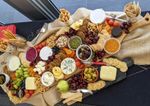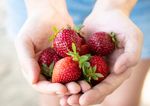More than half of foods aimed at kids are unhealthy: research
by Jane Martin, Executive Manager of the Obesity Policy Coalition (OPC) and Alcohol and Obesity Policy at Cancer Council Victoria
- June 27, 2017
- Leave a comment
Childhood obesity continues to be a major issue in Australia, with 27 per cent of our children now overweight or obese[i]. So why are we still allowing food manufacturers to directly target children with promotions on unhealthy food?
A recent survey by the Obesity Policy Coalition (OPC) revealed that more than half of supermarket products which target kids using cartoons or characters on their packaging were classified as ‘unhealthy’.
As food advertising is basically self-regulated in Australia food companies are able to play with the power and influence of cartoons and characters when promoting their product.
Big food companies use this unfettered marketing tool because it is very effective in creating pester power in children, a key driver influencing what parents buy for their kids. Advertising is designed to do that. . As frustrating and relentless as pester power may be, we can’t blame kids for being naturally drawn to the familiar faces of their favourite characters splashed on the front of junk food in the supermarket. It shouldn’t be up to parents to fight their children’s nagging for products, companies should not be using these influential techniques to market this food in the first place.
Given the growing concern for Australian children’s current state of health and well being, you would hope this powerful marketing tactic could instead be used to promote healthy foods, such as fresh fruit and vegetables. This is where there are real deficits, so more promotions appealing to children would be welcome.
What the survey found
The OPC surveyed 186 supermarket products which featured characters or cartoons on their packaging. The study revealed that 52% of products using this technique were deemed unhealthy.
Of the products containing cartoons or characters promotions, the following foods were classified as unhealthy:
- 87% of kids’ snack bars (26 of 30 products surveyed)
- 88% of kids’ ice-creams and icy poles (30 of 34 products)
- 61% of cheese snacks (17 of 28 products)
- 32% of kids’ breakfast cereals (13 of 41 products)
- 19% of kids’ dairy snacks (10 of 53 products).
The Food Standards Australia New Zealand (FSANZ) Nutrient Profiling Scoring Criterion calculator was used to assess the amount of energy of certain nutrients (such as saturated fat, sugars and sodium) present in a product to categorise it as unhealthy.
The unhealthy products, plastered with bright cartoons on their packaging, included Kellogg’s Frosties, which contained more than 41% of sugar, and Kraft Cheestik Sticks, which contained 17.5g of saturated fat per 100g.

What does this mean for Australian children?
The average Australian child has a one in four chance of being above a healthy weight. Much of this problem is driven by what they eat, and currently, just 5 per cent of Aussie kids eat enough fruit and vegetables[ii], while around 40% of their energy intake comes from junk food[iii].
Allowing companies to place cartoons on the packaging promoting unhealthy food goes against what most parents want to do – encourage their children to eat a healthy diet.
It does nothing to prevent overweight and obesity which, in the long term, increases the risk of developing associated serious, long-term health issues, such as heart disease, type 2 diabetes and some cancers.
What needs to be done?
Peak health bodies, such as the World Health Organization, recognise restricting junk food marketing to children as a vital step in preventing obesity.
The OPC wants to see the Federal Government extend and strengthen existing junk food marketing regulations. It’s time to protect our kids and put an end to food manufacturers exposing our vulnerable children to the influence of animations and cartoons, just so they can sell more junk food.







